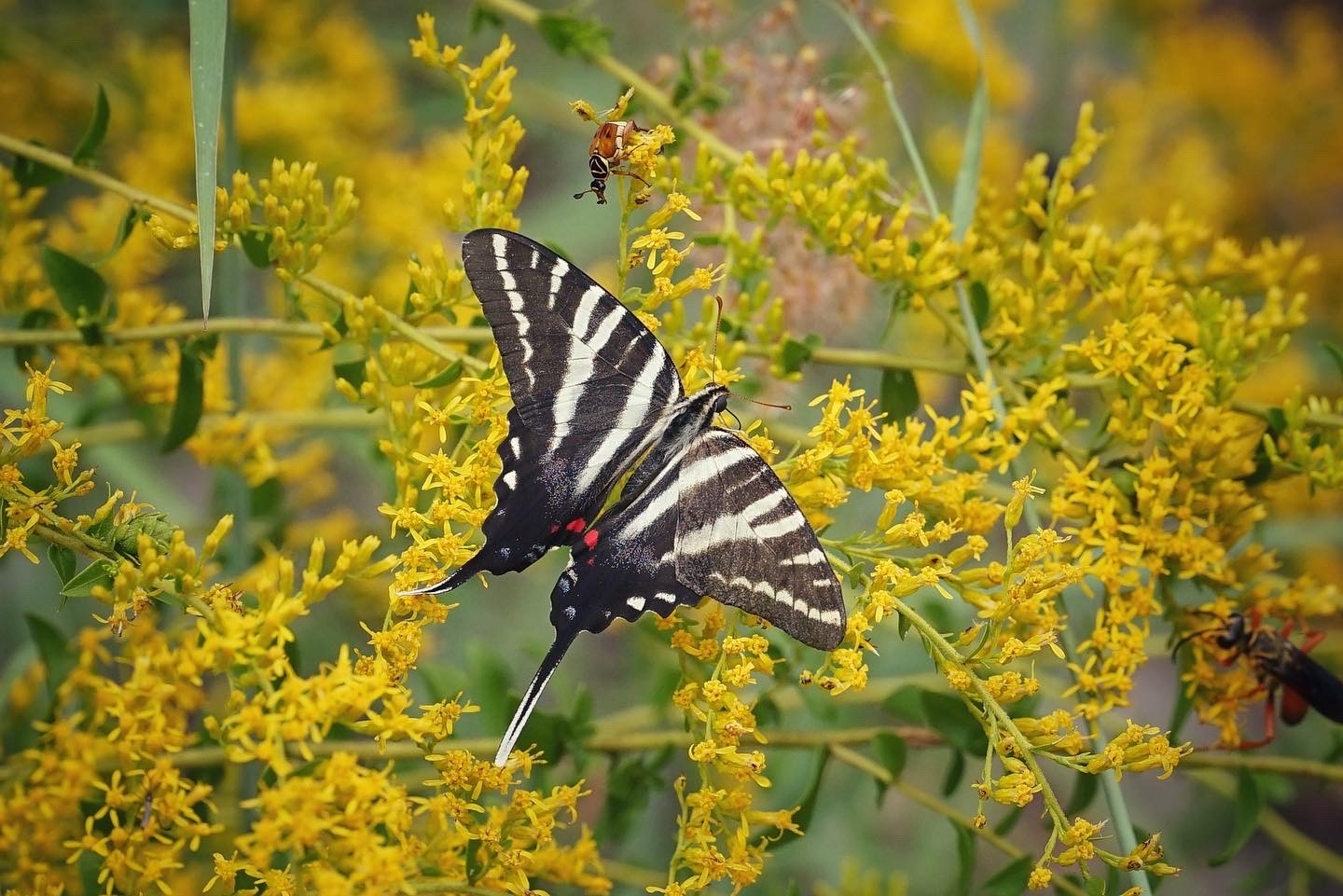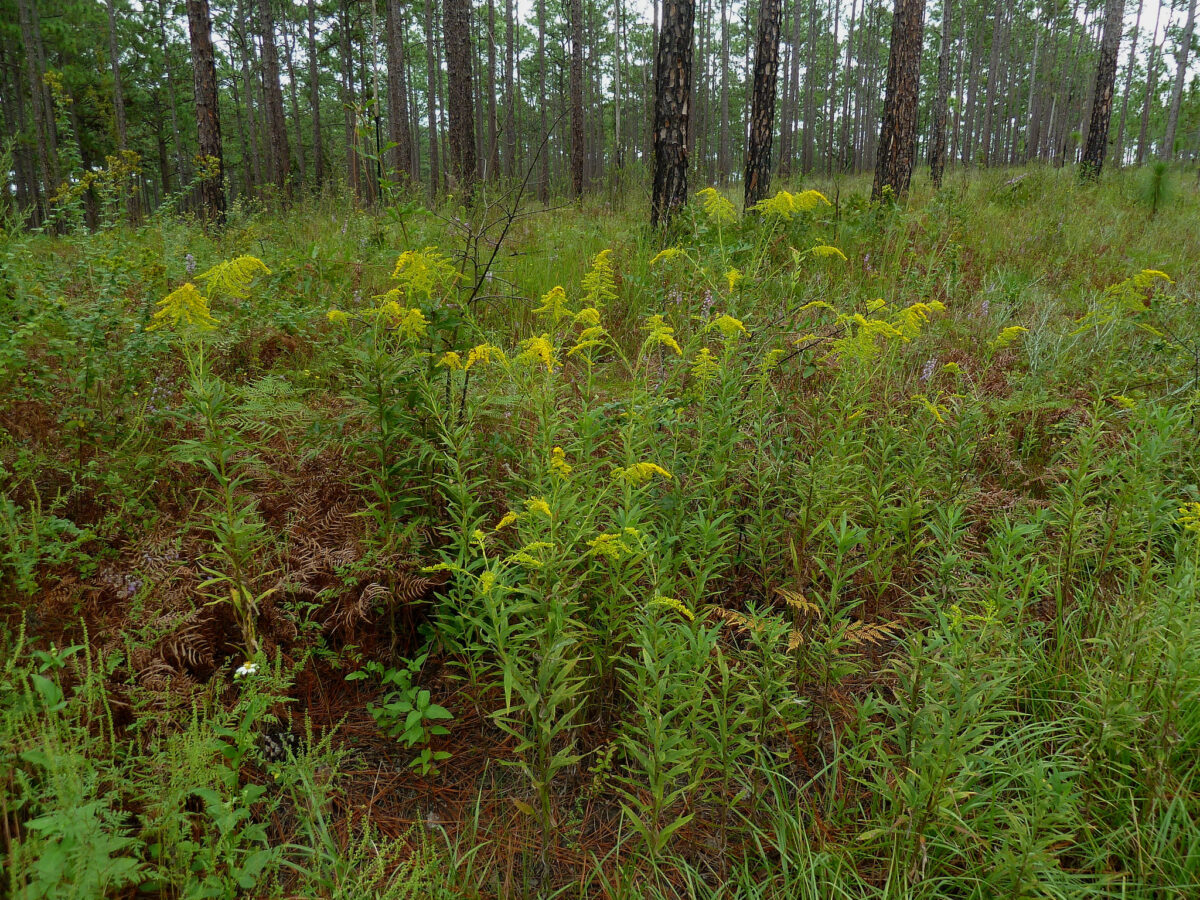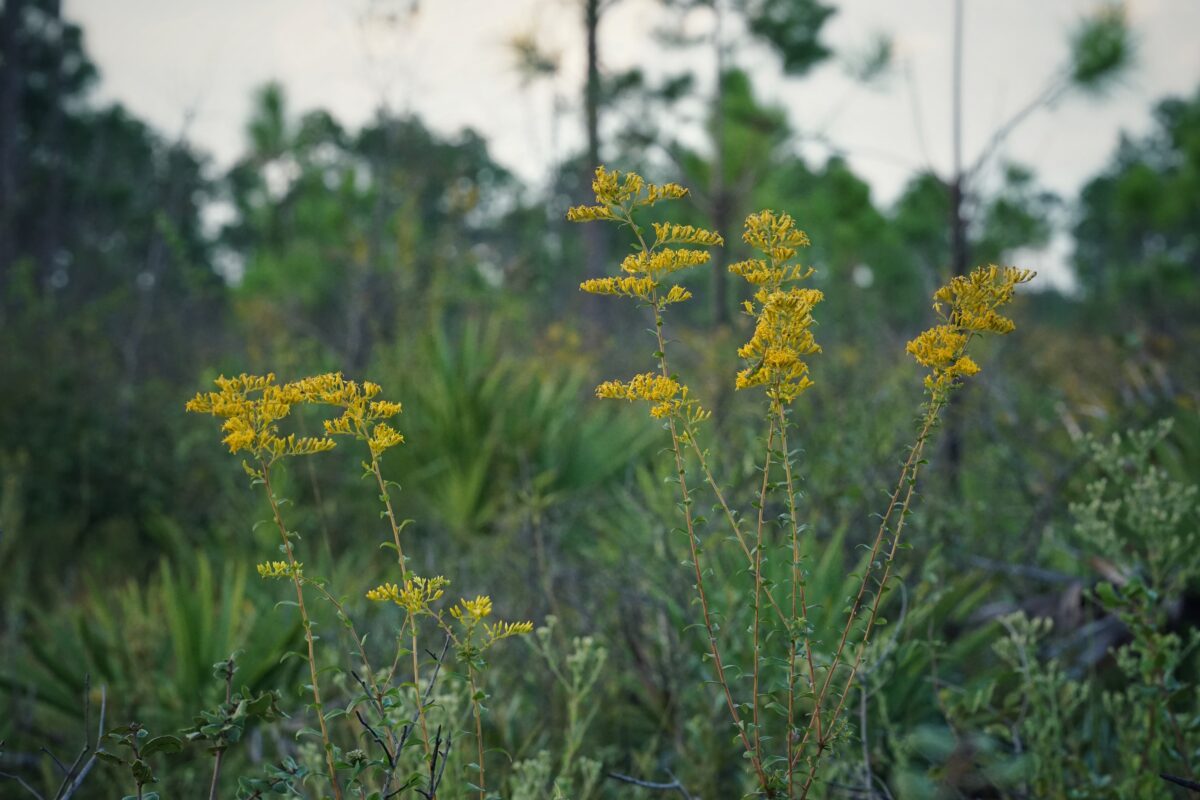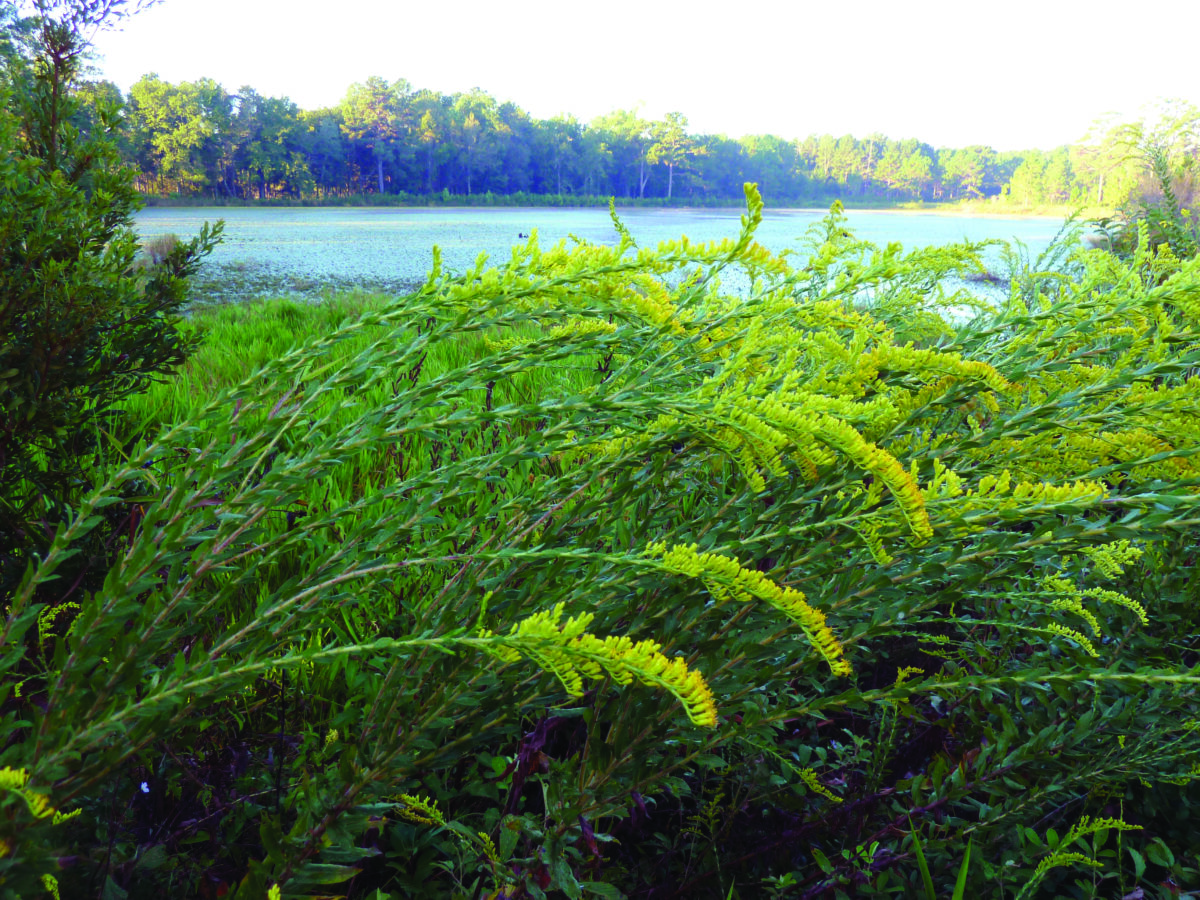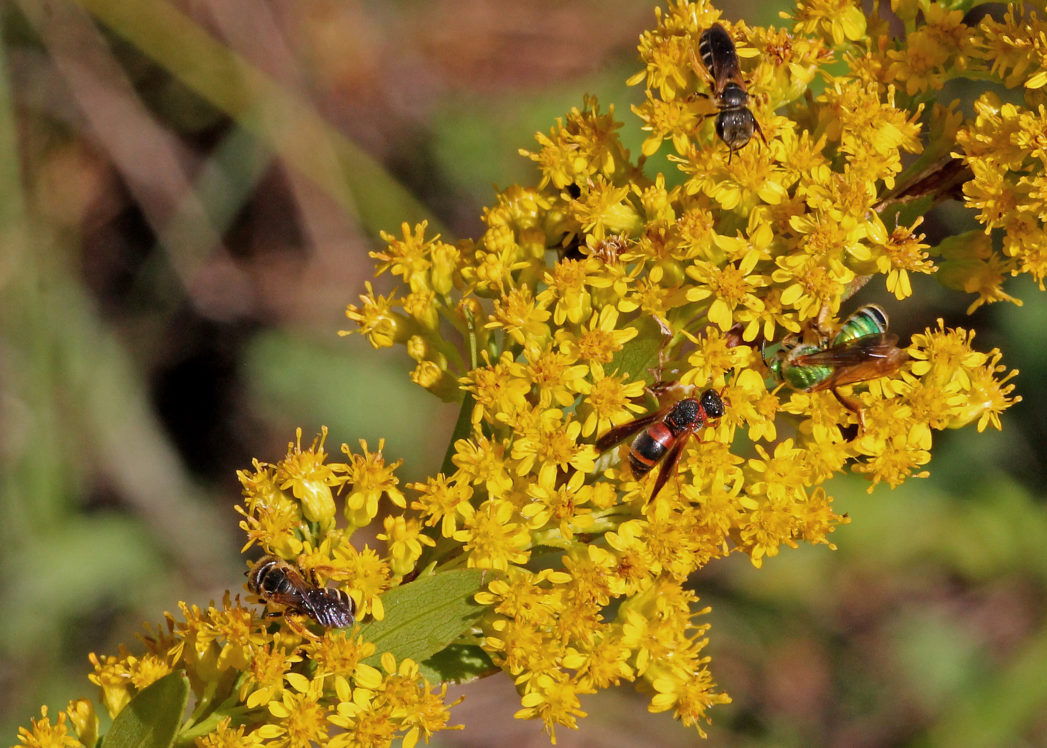Fall is golden in Florida
Pictured above: Zebra swallowtail butterfly on Chapman’s goldenrod (Solidago odora var. chapmanii). Article by Jeff Norcini.
Goldenrods (Solidago spp.) are a traditional harbinger of fall, lighting up the landscape with their bright yellow inflorescences. You’ll find them blooming in showy masses in a variety of habitats including coastal dunes, brackish marshes, wet flatwoods, scrub and sandhills.
While some goldenrods are widely known as butterfly nectar plants, I suspect that all Florida goldenrods serve as nectar plants for butterflies and other pollinators. Only one species is a larval host plant, Chapman’s goldenrod (Solidago odora var. chapmanii), which is fed on by some moth caterpillars. The plant also attracts Goldenrod soldier beetles (Chauliognathus pensylvanicus), which feed on the flowers’ nectar and pollen. This beetle is a predator of garden pests and is a beneficial insect.
Goldenrods are members of the Asteraceae family, formerly known as Compositae. That name refers to the flowers that are actually a composite of two flower types: showy, petal-like ray flowers surrounding many tiny disc flowers. Disc flowers are the fertile flowers that produce the seed. (Think of a sunflower seed; sunflowers are also members of the Aster family.) However, most goldenrod flowers lack the petal-like ray flowers and are comprised solely of disc flowers. There are 22 goldenrod species found in Florida, all of which are considered native. Most of them occur in the Panhandle, but only three occur statewide:
- Pinebarren goldenrod (Solidago fistulosa)
- Wand goldenrod (Solidago stricta)
- Seaside goldenrod (Solidago sempervirens), especially coastal areas
Two occur nearly statewide (except the western Panhandle):
DID YOU KNOW?
Sometimes goldenrods are blamed for allergies and hay fever. While some people may be allergic to goldenrod pollen, it’s the wind-pollinated plants – which goldenrods are not – that are more likely the cause. One group of those wind-pollinated plants is Ragweed (Ambrosia spp.). Of the four species found in Florida, the one that most often occurs is Common ragweed (Ambrosia artemisiifolia), and is found in every Florida county. It often blooms at the same time as goldenrod and occurs in the same habitat; however, Ragweed’s small greenish flowers go unnoticed while the bright yellow goldenrod flowers are easily seen and often presumed to be the culprit. A good article about this is The Goldenrod Allergy Myth.
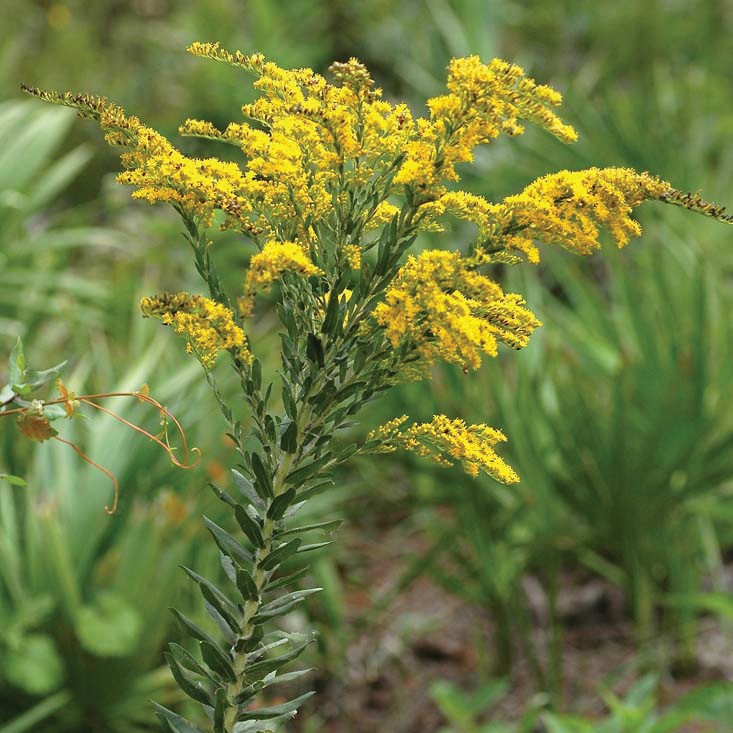
Photo by Walter Taylor
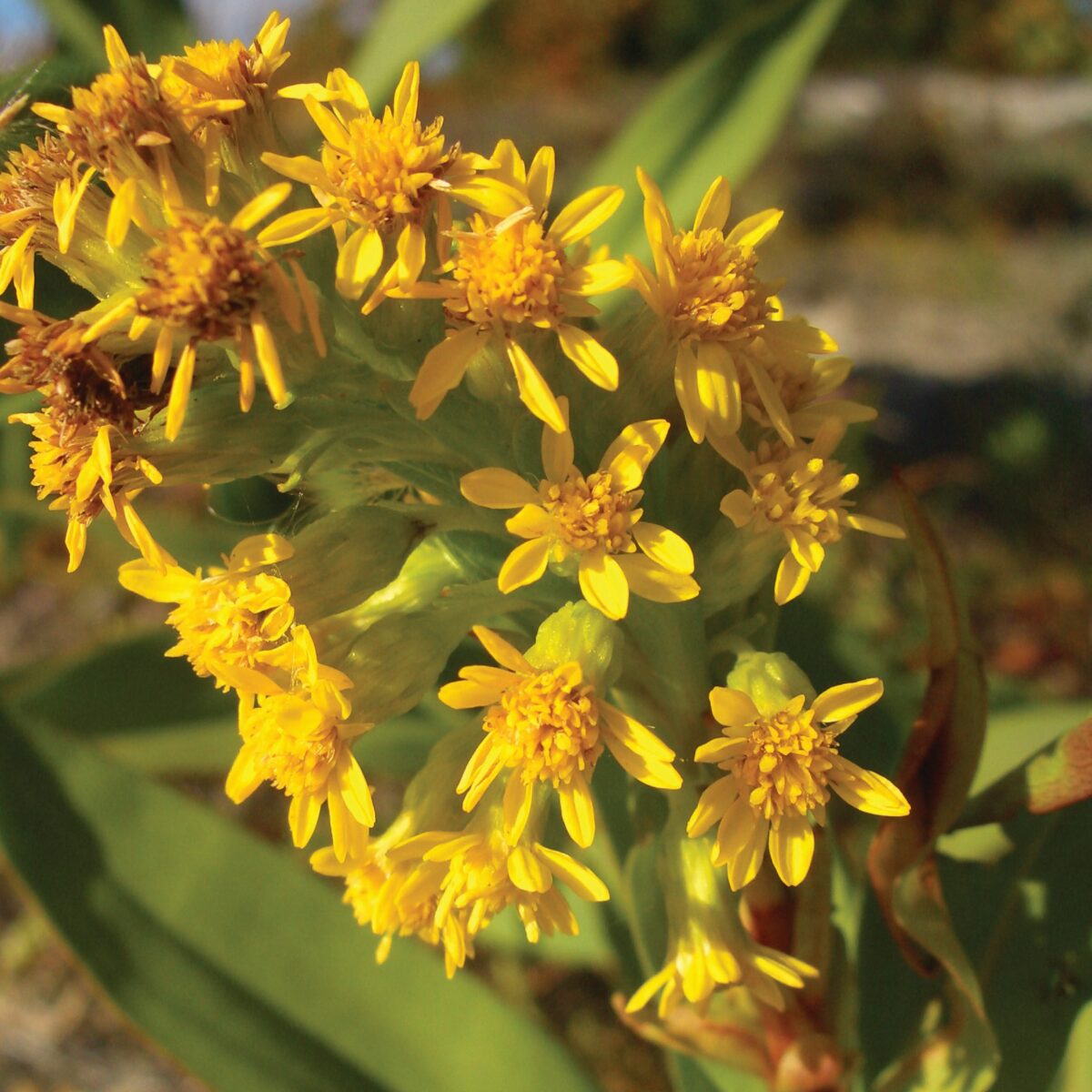
Photo by Nelson DeBarros
GET GROWING!
Goldenrod makes a great addition to home landscapes providing both stunning fall color and an abundance of wildlife value! Learn more here.
Goldenrods are available from native plant nurseries, find one near you at www.PlantRealFlorida.org or you can purchase seed from the Florida Wildflower Cooperative.
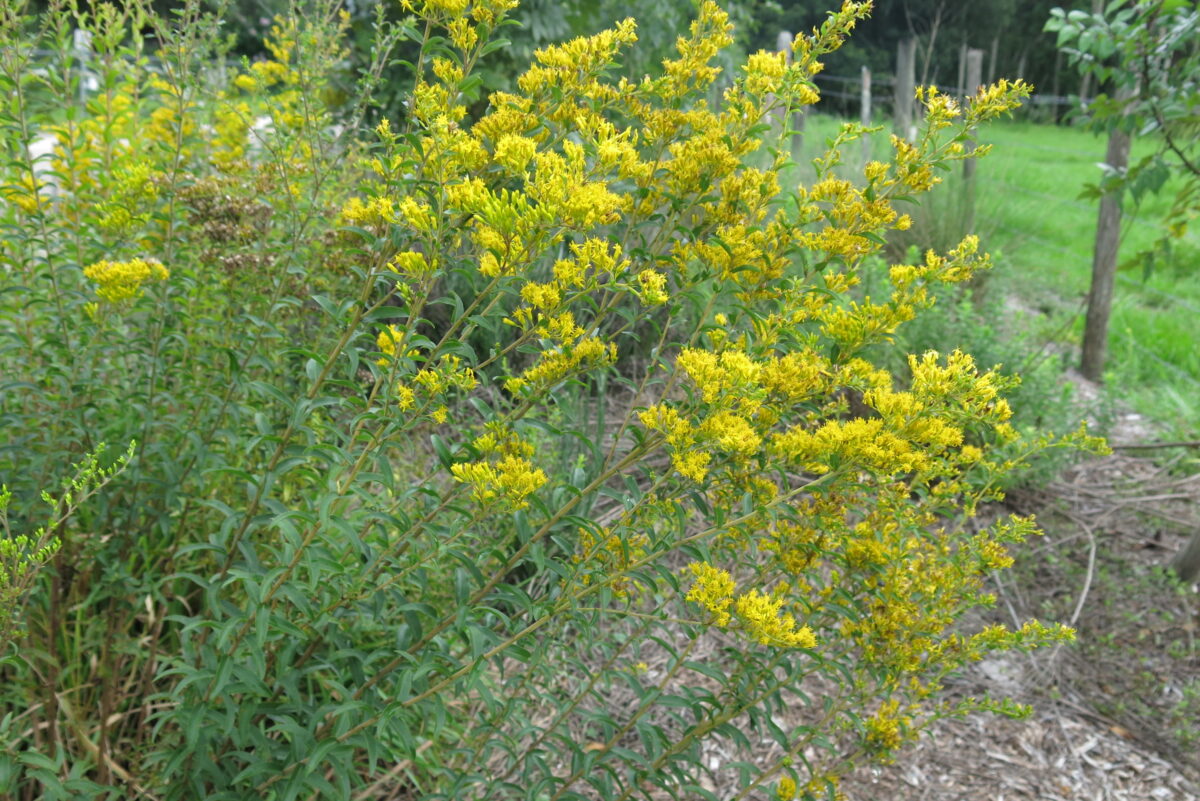
Great Goldenrods for your home landscape include:

